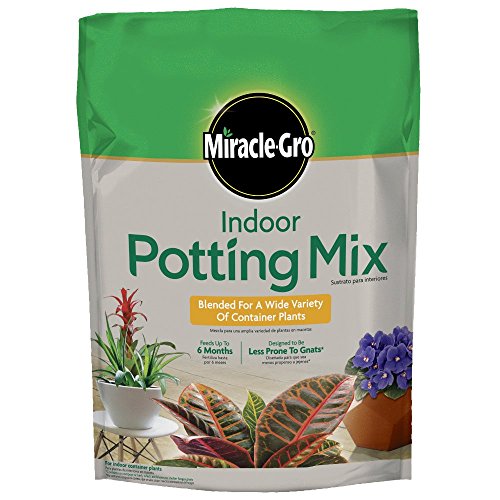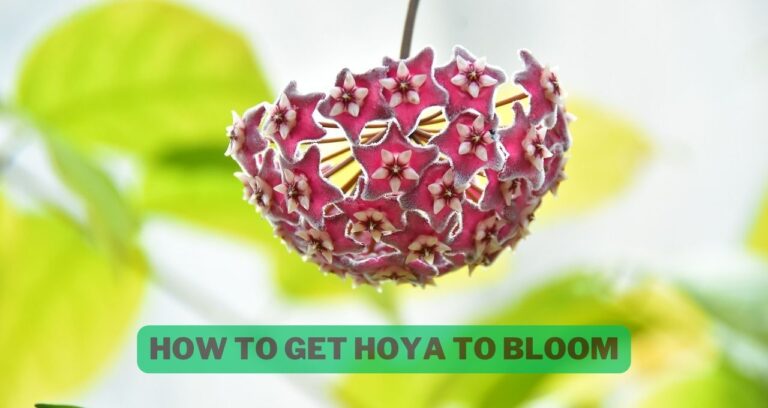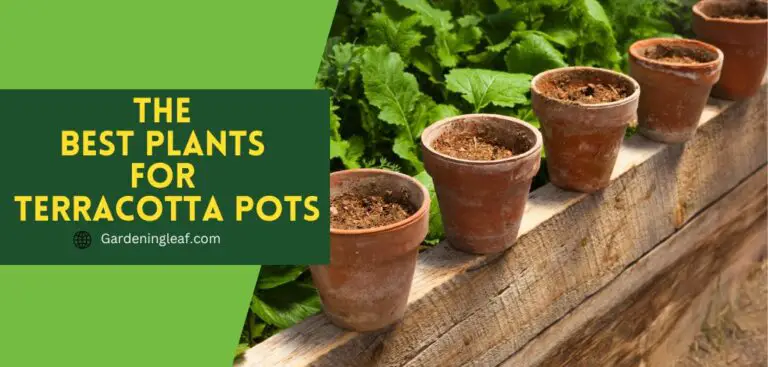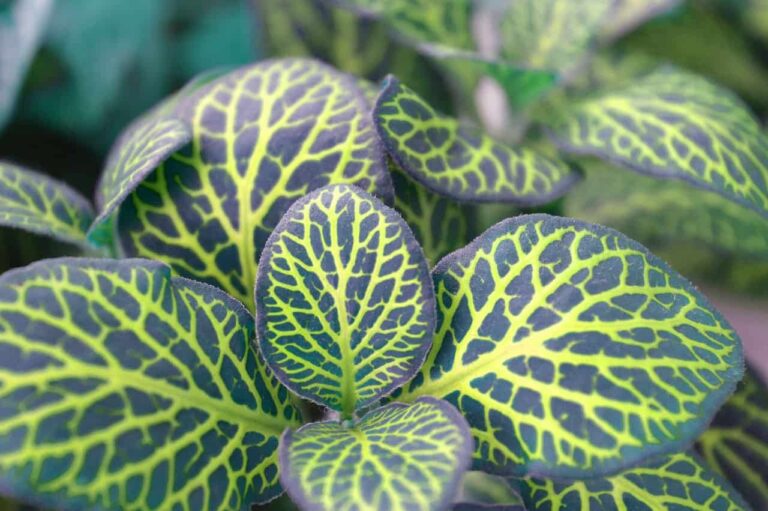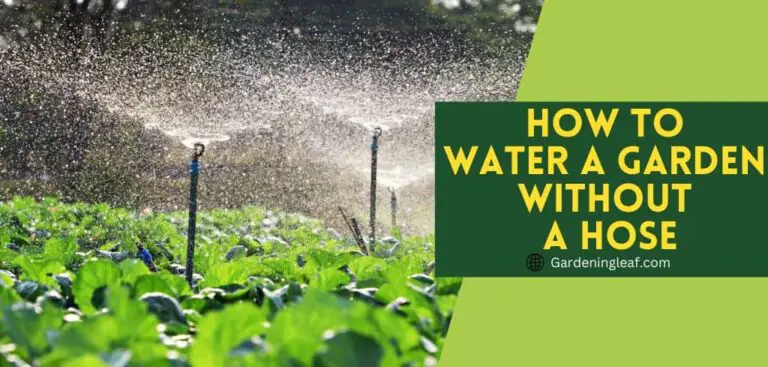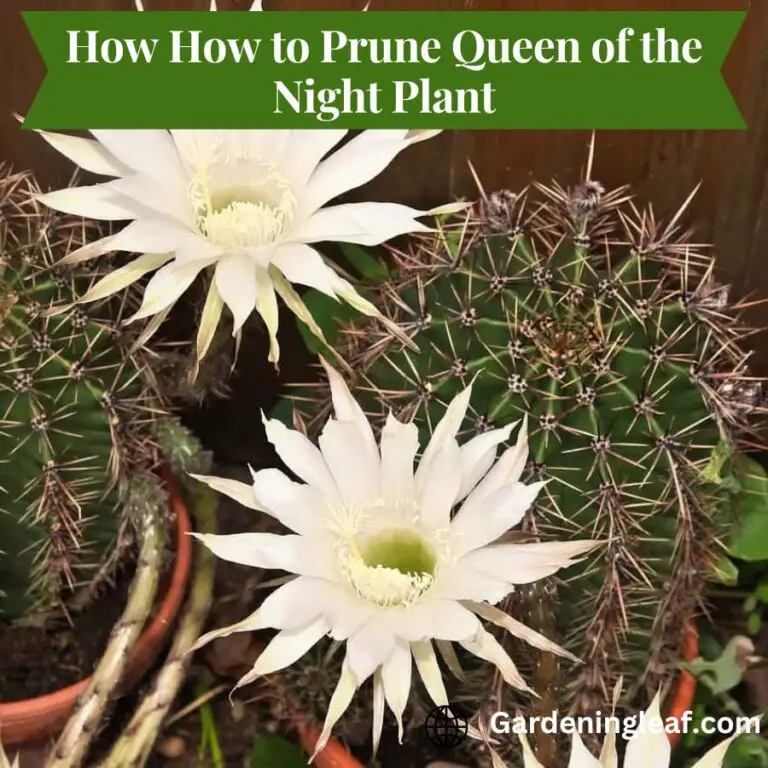Best Soil for Chinese Money Plant – What Kind Do You Need?
The Chinese Money Plant, also known as Pilea peperomioides, is a lovely and easy-to-care-for houseplant. Native to the Yunnan province of China, this plant has become increasingly popular as a houseplant because of its attractive foliage, low maintenance, and tolerance to a wide range of growing conditions.
But to ensure good growth and health, choosing the right type of soil for your Chinese Money Plant is important. This post will discuss the best soil for Chinese Money Plant and other important care tips.
The Best Soil for Chinese Money Plant

Loose, well-draining potting soil is the most suitable option for Chinese money plants. This type of soil allows for easy drainage and good aeration, which are important for the plant’s health.
If you’re looking for potting soil best for Chinese Money Plants. We recommend Miracle-Gro Potting Mix and Palm & Citrus Potting Mix. This soil includes peat moss, perlite, coir, and other organic materials. It will provide the best environment for growth. Plus, this soil is enriched with Miracle-Gro plant food to give your plant a boost of nutrients.
What Sort of Soil is Required by Pilea?
Soil Type:- The Pilea plant requires a special type of potting soil that is well-draining yet maintains its loamy consistency. The soil should hold moisture but not become overly soggy. This type of soil is ideal for keeping your Pilea healthy and happy!
Soil Material:- A top-notch potting mixture made of organic components, including peat moss, perlite, pumice, coco coir, pine bark, sterile compost, wood fiber, and more, that is intended to promote the health and growth of your plants.
This nutrient-rich blend of natural ingredients provides the perfect environment for healthy roots, improved drainage and aeration, and long-lasting growth.
Soil pH Level:- The soil should also be slightly acidic, with a pH between 5.5 and 6.5, to provide the best environment for your Chinese Money Plant.
Supplementary Nutrients:- Provides the optimally balanced proportion of phosphorus, nitrogen, and potassium, as well as micronutrients like iron oxide, nitrogen, phosphorus, potassium, nickel, calcium, sulfur, and magnesium. This blend will ensure that your plants receive the essential nutrients for vigorous growth, healthy blooms, and abundant harvests.
Moisture Level of the Soil:- Once your Pilea Peperomioids have grown, you don’t need to water them as often. Overwatering can cause root rot, and in the end, it’s killing your plant. To ensure your plant is getting the right moisture, check the soil by inserting your finger two inches into the ground. If the soil seems dry, it’s time to water the plant. If it’s still wet, that’s a sign of enough moisture.
Read More :- How To Make Pothos Grow Faster: Basic care, plants, and more
Creating Your Soil Mixture for Pilea peperomioides
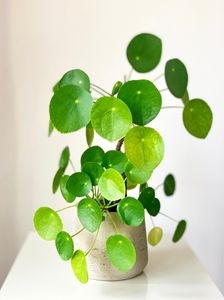
Prepping the Best Soil for Chinese Money Plant is important to successful Pilea care. To ensure that your Pilea is healthy and thriving, it is important to prepare the soil and potting mix before planting properly.
- Many soil types can be used for growing money plants, so it is important to consider the different factors when choosing soil. You should consider factors like pH, particle size, and moisture content.
- You can start by combining different soil types to create your soil mixture. This will allow you to customize the soil mix to fit your needs and preferences.
- To promote good growth, water the money plant thoroughly and fertilize it regularly. Money plant plants prefer soil with high drainage, so ensure adequate sunlight and water drainage.
First Mix
- 60% coco coir or cocopeat
- 20% pumice or perlite
- 10% worm castings
- 5% orchid bark
- 5% horticulture charcoal
This mix is ideal for providing superior drainage and aeration for your plants. The coco coir will help retain moisture and nutrients, while the pumice and worm castings provide essential minerals and food for the roots. The orchid bark and horticulture charcoal provide the perfect balance of air and water while encouraging microbial activity to help keep your plants healthy. With this blend, you can be sure your plants get the right nutrients and drainage to flourish!
2nd mix
- 1 Part organic matter – sterilized compost mixed with wood fiber or pine bark
- 1 Part coconut coir
- 1 Part rice hulls, vermiculite, or perlite

Mix your soil with one part organic matter, like sterilized compost mixed with pine bark or wood fiber, for extra nutrients and moisture retention. Then add one part coconut coir for enhanced aeration and drainage. Finally, complete your mix with one part rice hulls, perlite, or vermiculite for optimal aeration and drainage. This combination will provide nutrient-rich soil and optimal aeration, allowing your plants to thrive.
Best Commercial Soil Mix for Pilea Plant
Some of the best soil for chinese money plant are available in the market
Miracle-Gro Potting Mix: To help maintain the soil mixture’s capacity and drain quickly. This soil mix made with peat moss, coir, and compost is used in the potting mix.
The mixture includes perlite, fertilizer, a wetting agent, and sphagnum peat moss. This combination of ingredients makes for a quality potting mix that helps promote healthy plant growth.
- Miracle-Gro Indoor Potting Mix feeds houseplants for up to 6 months and is...
- This potting mix contains coconut coir, which holds and releases water and...
- Blended potting soil for a wide variety of indoor container plants,...
Money Tree Blend All Natural Mixture: This mix is rfect for Chinese money plants as it contains peat moss, perlite, worm castings, and lime. These ingredients promote drainage and aeration in the mix and provide essential nutrients plant roots need. The potting mix also includes a wetting agent that helps keep the soil moist throughout the growing season.
- 100% NATURAL: Hand blended designed for your tropical houseplants using all...
- USES: Specially formulated for health and growth of houseplants and...
- USES: Specially formulated for health and growth of houseplants and...
Sun Gro Horticulture Black Gold: This potting mix contains Canadian Sphagnum Peat Moss, Bark, Compost, Perlite or Pumice or Cinders, Earthworm Castings, and Dolomite Lime.
The peat moss helps improve water retention and provide aeration, while the bark and compost add valuable nutrients to the soil. Perlite and pumice cinders, for example, help in loosening and drainage. The earthworm castings are a great source of organic matter, while the dolomite lime helps to adjust the pH balance .
Finally, the controlled-release fertilizer ensures that the desired nutrients are released gradually over time to be available to the plants when they need them most. All in all, this is an excellent product that I highly recommend!
- A slow-release complete fertilizer is added to give plants a strong start
- Made with Canadian sphagnum peat moss with worm castings, forest humus, and...
- This product is made in United States
Burpee Premium Organic Potting Natural Mix: The combination of coconut coir, peat, and perlite ensures vibrant blooms. The OMRI certification is a great assurance that it’s suitable for organic use, and the coconut coir helps maintain moisture between waterings for vibrant blooms and delicious produce.
I also appreciate that the mix contains peat, coconut coir, and perlite, as these ingredients all help to ensure healthy and vibrant plants.
- ALL-NATURAL MIX: Burpee Organic Premium Potting Mix is formulated with...
- PERFECT FOR CONTAINERS: Use this growing mix for planting in containers or...
- RETAINS MOISTURE: Sustainable coconut coir helps hold the perfect amount of...
All Natural Potting Mix: The mix is incredibly nutritious and full of natural ingredients that help my plants thrive. The combination of sphagnum peat moss, humus, and perlite is great for providing aeration and nutrients to the soil.
The addition of earthworm castings, alfalfa meal, kelp meal, and feather meal makes this mix even more nutrient-dense. And the MYCO-TONE blend of endo and ecto mycorrhizae help promote strong root development.
- FOR USE ON: Not just an indoor potting soil, this can also be used as a...
- CONTAINS: This organic soil for plants & vegetables is a rich blend of...
- MYCO-TONE: A proprietary blend of endo & ecto mycorrhizae.
Read More :- Manjula Pothos vs Marble Queen: Which One is Best for You?
Problems due to Poor Soil Condition in Pilea Plant
It may cause a variety of issues if the soil conditions are unfavorable. Nutrient deficits, insect infestations, and root rot can all be caused by poor ground conditions. If you notice your plant’s leaves turning yellow, wilting, or curling, these may be signs of some issues with your soil.
Nutrient Deficiencies
Without proper nutrients, our plants will not be able to thrive and will suffer from a variety of problems. Unfortunately, poor nutrient deficiencies in soil pilea common problem. And they can be seriously harmful to the health of your plants.
You need to measure the soil conditions and make necessary adjustments. Some signs of nutritional deficiency include slowed development, leaf yellowing, and final death. Thus it is essential to provide the soil necessary nourishment. The pilea can survive and meet its full potential with regular monitoring and management.
Root Rot
Poor soil conditions can contribute to this issue, and it is important to identify the signs of root rot early to prevent permanent damage. Yellowing or drooping leaves, root discoloration, and a strong odor originating from the soil are all symptoms of root rot.
If left unchecked, root rot can cause the plant to die. To prevent root rot and other soil-related problems in your Pilea plant. Providing well-draining soil, adequate air circulation, and the proper pH balance is essential.
If the problem continues, it may be required to repot the plant with new, sterile potting soil. Additionally, it is important to check your plant regularly for signs of root rot and take prompt action if any are spotted.
Poor Drainage
These problems include root rot, withering leaves, and stunted growth. A lack of drainage can create an unhealthy environment for the plant. To guarantee appropriate drainage and a healthy environment for your Pilea. Make sure the soil drains effectively. Apply natural mulch. It will help water retention, and water only when the soil is dry.
Insect Infestations
Poor soil conditions can cause Insect Infestations. To protect your Pilea from these problems. It’s important to check your plant for insect infestation, like mites and aphids. And inspect the Ground for signs of poor drainage or nutrient deficiencies.
Keep your Pilea in an environment with adequate air circulation and light. And use insecticides and other treatments as needed to keep pests away. With proper care, your Pilea will remain healthy and thriving!
Read More :- The Best pots for venus fly traps: A buyer’s guide
Most Common Reasons Your Pilea Might Not Be Growing
Yellowing or Drooping Leaves
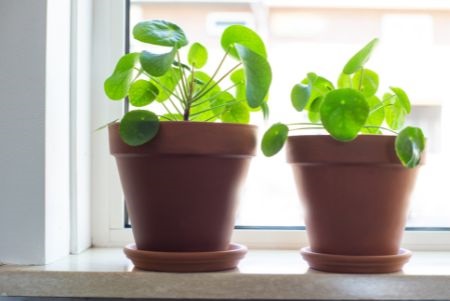
Having yellow leaves or drooping leaves on your Pilea plant can indicate a few issues with the ground conditions. These issues can range from incorrect pH levels to overwatering or even underwatering. It is important to understand what kind of soil is best to fix these problems. Take the necessary steps to correct any deficiencies.
The leaves will turn yellow and droop if the pH is too high. To correct this, check the pH level and then add a soil amendment to lower the pH level back to the desired range.
If the plant is overwatered, the roots may be sitting in the soggy ground and not getting the oxygen they need. To fix this issue, ensure the soil is slightly dry before watering again.
If the plant is underwatering, the ground may be too dry and not provide enough water to the roots. To fix this, water the plant more often and deeply.
By taking the time to understand the soil needs of the Pilea plant and correcting any soil deficiencies, you can ensure that your plant will stay healthy and beautiful for years to come!
Drooping Leaves
Overwatering a Chinese money plant can cause its leaves to droop and curl inward. To avoid this common problem, it’s important to only water when the soil is dry. Allow the soil to dry between watering. That way, you can keep your Chinese money plant looking healthy and vibrant.
Curling in the Leaves
If you’re noticing the leaves on your Chinese money plant curling inwards, then it’s likely that the temperature is too high if Temperatures above 80°F (26C°) Can cause this problem.
If your plant is exposed to direct sunlight. To avoid this issue, keep your Chinese money plant out of direct sunlight and ensure the temperature inside your home stays below 80°F.
Lack of sunlight:
If your Pilea is not receiving enough sunlight, it will not grow. To ensure that your plant gets enough light. Find a spot in your home where it will receive bright, indirect light. Be careful not to overexpose your Pilea to sunlight, as this can also damage the plant. Make sure your Pilea gets good sunlight daily for the best growth.
If You have a south-facing window and receive direct sunlight from late morning till mid-afternoon. This will be ideal for plants if you need a place that gets direct sunlight. You can also consider utilizing artificial grow lights to complement the light that your plants receive.
Over watering:

Overwatering is a regular problem that all gardeners face. If you allow your plant in a saucer of water for an extended time, it will die. It can result in root rot, plant stress, and even death.
To avoid this problem, check the soil moisture regularly and adapt your watering schedule accordingly. To lessen the risk of overwatering, you can also apply mulch to assist in retaining moisture and employ adequate drainage.
Fertilizer:
Another reason your pilea peperomioides plants are not growing properly is not regularly .fertilizing your Pilea plant is essential for promoting strong foliage growth and keeping its lush green color.
Regular fertilizing will help your Pilea stay healthy and vibrant for years. Consider adding a balanced fertilizer to your plant’s soil every few months for optimal results.
Pilea peperomioides care
One of the main reasons Chinese money plants are so beloved is that they are incredibly easy to take care of. Pilea peperomioides are a great option, even for beginners, as they require minimal caring and still thrive! With just a bit of basic care, your Chinese money plant will reward you with lush foliage and plenty of enjoyment.
So that you’ll know what to do after successfully potting your plant, let’s quickly go over the essentials of Chinese money plant care.
Watering:- Pilea peperomiodes plants prefer high humidity and regular watering. Use a humidity tray beneath the plant’s pot to boost the humidity level around the plant, especially in dry locations and residences. The wet ground will cause root rot, fungus, and plant stress, which can lead to the death of your plant. So water carefully.
You can use a soil moisture meter to know the ground moisture level. Water quality is also very important. We normally use tap water, which contains chlorine and other harmful chemicals. So it’s best to filter those water or use a water softener.
Fertilizing: – Apply a balanced fertilizer to the soil every two months during the growing season and once a year in the winter. This will help promote strong plant growth, vibrant colors, and healthy roots. You can use EZ-gro 20 20 20 Fertilizer or Miracle-Gro Water Soluble All Purpose Plant Food.
Propagation: – Pilea is an excellent and easy-to-care-for houseplant that produces new pups or baby plants from its mother plant, making it easy to propagate. It can propagate from cuttings. After cutting healthy brunch, put them in water for a few weeks before transplanting or putting them in soil. I tried both approaches and had success with both.
When potting new Pilea babies in their container, it’s recommended to wait until the plantlets reach a height of 2-3 inches before removing them from the mother plant. This is because larger plantlets can survive independently without relying on the parent plant for support and nutrients.
With its fast-growing nature, the “Sharing Plant” can quickly and easily be cut, rooted, and grown into new plants.
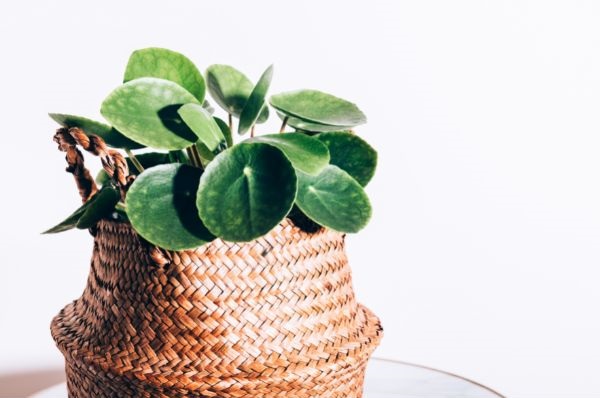
Light:- Chinese money plants thrive in bright light, although they may also do well in bright indirect light. Direct sunlight should be avoided during the hottest hours of the day since it can scorch plant leaves and possibly burn your money plant.
Instead, place your plant in indirect light or an indoor potting mix/container with a plastic cover that blocks direct sunlight.
Repotting:- Repotting your Pilea plant every 1-2 years will keep it healthy and happy. Not only does it help your plant stay healthy, but is a great opportunity to assess your current potting mix, soil type, and pot size. If your Pilea is becoming root-bound, it’s a sign that it needs a larger pot . The new pot will allow growing new roots and thriving.
Potting:- People usually use plastic pots. But I feel terracotta pots are the best for this kind of plant. The porosity of Terracotta allows the soil to dry out faster than plastic. This helps prevent water stagnation and the risk of root rot. Even though both pots have drainage holes, terracotta absorbs far more water.
Read More :- How to Propagate Fiddle Leaf Fig Tree – The Easiest Method
FAQs
Is Chinese money plant a succulent?
No, the Chinese money plant is not a succulent. It is native to southern china. The plant is sometimes confused with succulents, due to its thick, succulent leaves. But it does not store water in the same way that succulents do. The plant prefers well-draining soil and moderate moisture.
Can I use cactus soil for Pilea?
Cactus soil is designed to be fast-draining and well-aerated, which is great for cacti and succulents, but it may not be the best choice for Pilea plants. Pileas generally prefer the moist but well-draining ground.
Conclusion
Chinese Money Plant (also known as the coin plant, friendship plant, ufo plant, or pancake plant ) is an easy-to-care-for, low-maintenance houseplant that can thrive in various soil types. The best soil for Chinese Money Plant is a lightweight, well-draining mix that provides plenty of oxygen and moisture.
Source : https://www.thespruce.com/growing-pilea-peperomioides-5090425

